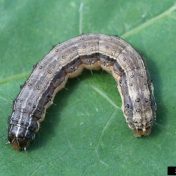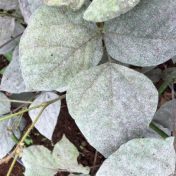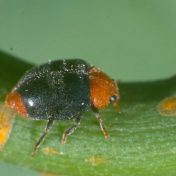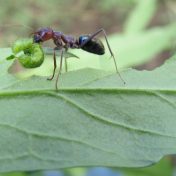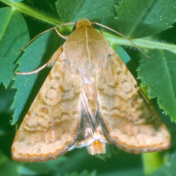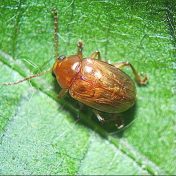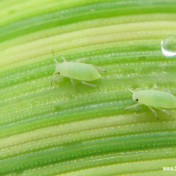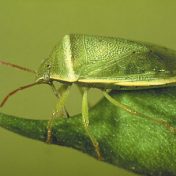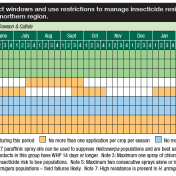Fall armyworm (FAW, Spodoptera frugiperda) is an exotic pest that was detected in northern Queensland in a maize crop in February 2020. State and federal biosecurity organisations have determined it to be unfeasible to eradicate this pest and it is now classified as an endemic pest. Originating from tropical and sub-tropical areas of the Americas, FAW was reported in Africa… Read more »
Recent rainfall has led to opportunistic late plantings in some areas. The current high relative humidity may also lead to an increased risk of disease in some crops. Department of Agriculture and Fisheries (DAF) plant pathologists are encouraging Northern Region grain growers to submit disease samples (particularly powdery mildew in mungbeans) for diagnosis as part of effective paddock monitoring and… Read more »
Cryptolaemus montrouzieri is a ladybird beetle native to Australia that feeds predominately on mealybug and soft scale insects. Identified as an effective biological control agent, it has been exported to many other regions, and is reared commercially for control of a range of mealybug species, particularly in horticultural crops. In cotton crops where solenopsis mealybug (Phenacoccus solenopsis) is present, Cryptolaemus… Read more »
While ants are most often thought of as a nuisance in kitchens or at picnics, they can also be present in a wide range of crops and other farm areas. Although ant nests are usually built in undisturbed locations (in field crops ants are most commonly found on field margins), in some soils they can colonise cultivated areas quite quickly…. Read more »
The Beatsheet would like to wish all our readers and subscribers a very merry chrysalis for 2019! For those taking a break we hope you have a safe and happy holiday. The Beatsheet is brought to you with the support of DAF, GRDC and CRDC. If you have any comments or suggestions regarding this pest management information service, please let… Read more »
Every year the Queensland Department of Agriculture and Fisheries runs a Helicoverpa spp. pheromone trapping program for the Northern Grains Region to detect flights of Helicoverpa armigera and Helicoverpa punctigera in important cropping areas. The trap network provides growers and agronomists with a warning system for potential egg-lay in susceptible crops. Although very few crops were planted this season due… Read more »
Rhyparida sp. (swarming leaf beetles) have been reported in some Burdekin soybean crops. While the risk of outbreaks has declined as leaves dry off, growers and consultants are reminded to keep a lookout for this sporadic but sometimes very damaging pest. Monolepta sp. (redshouldered leaf beetles) have also been observed in some crops. What to look for Dead leaves are… Read more »
Are Russian wheat aphids (RWA) still moving north? No detections of RWA in crops have been received this year, and no detections from outside the already known distribution area. The most northerly detections to date (2018) were from Coonamble and Coonabarabran. We expect RWA to move further north every year and knowing where they are will help you prepare. Now… Read more »
One of the revelations for entomologists Hugh Brier and Trevor Volp during their recent trip to the Burdekin was that northern redbanded shield bugs (RBSB) (Piezodorus oceanicus) appear to be pale in comparison to their southern counterparts. In south east Queensland, females have a red (or pink) transverse band across their ‘shoulders’. In samples collected from Kingaroy and Bundaberg in… Read more »
Recent reports have surfaced that best practice pest management guidelines are not always being followed in winter and spring-planted mungbean and soybean crops. There are reports of some crops in the Burdekin being sprayed unnecessarily for well-below threshold pest populations, and/or being sprayed with no regard for the GRDC’s widely publicised Insecticide Resistance Management Strategy (IRMS) for Helicoverpa armigera. Similar… Read more »
